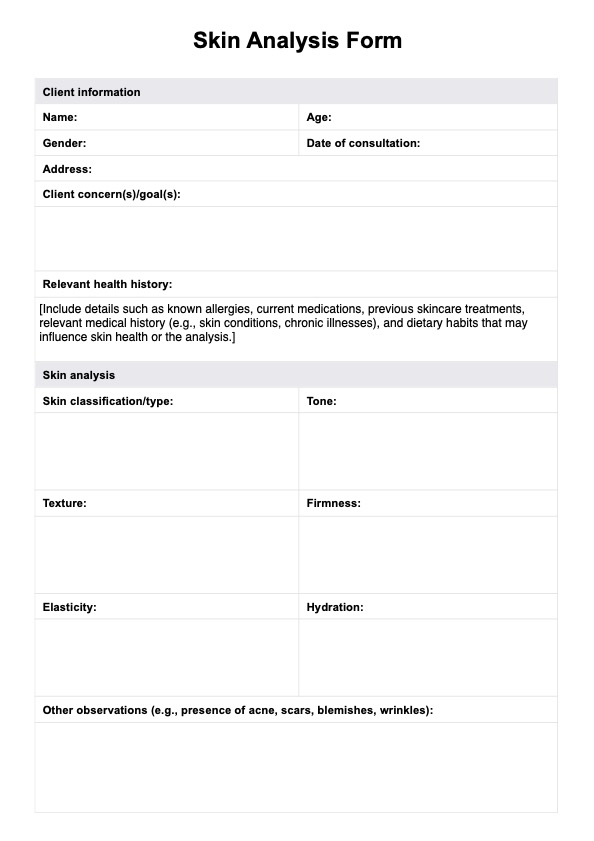Skin analysis is crucial for assessing the skin's overall health, identifying potential issues, and tailoring personalized client skin care plans. It enables early detection of skin-related issues, informs treatment decisions, and promotes proactive skin care.

Skin Analysis Form
Streamline client assessments with our Skin Analysis Form. Analyze and record information to provide personalized dermatology care. Download now!
Skin Analysis Form Template
Commonly asked questions
The evaluation process includes a comprehensive examination of the skin’s surface, focusing on texture, tone, and visible irregularities. Along with objective assessments, open-ended questions are often asked to gain deeper insights into the patient’s skin concerns. Dermatologists may also use tools like skin analyzers and detailed forms to gather essential information, helping to effectively determine and address common skin concerns and health conditions.
Skin complexion refers to the natural color and appearance of a person’s skin, including any variations in tone or pigmentation. Analyzing it helps dermatologists identify areas that may be prone to discoloration, sun damage, or other skin concerns.
EHR and practice management software
Get started for free
*No credit card required
Free
$0/usd
Unlimited clients
Telehealth
1GB of storage
Client portal text
Automated billing and online payments











